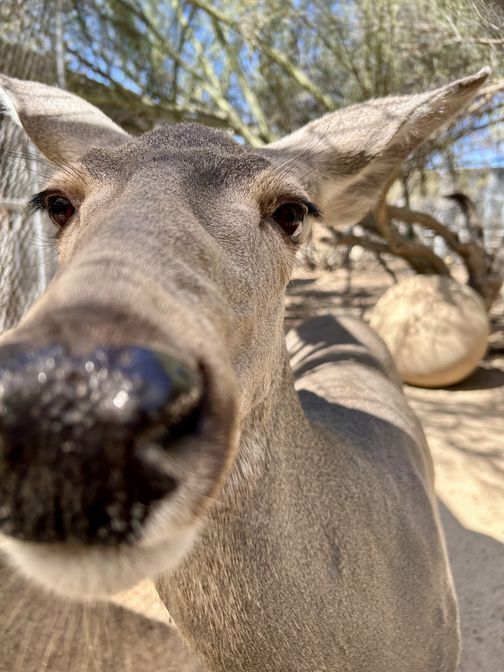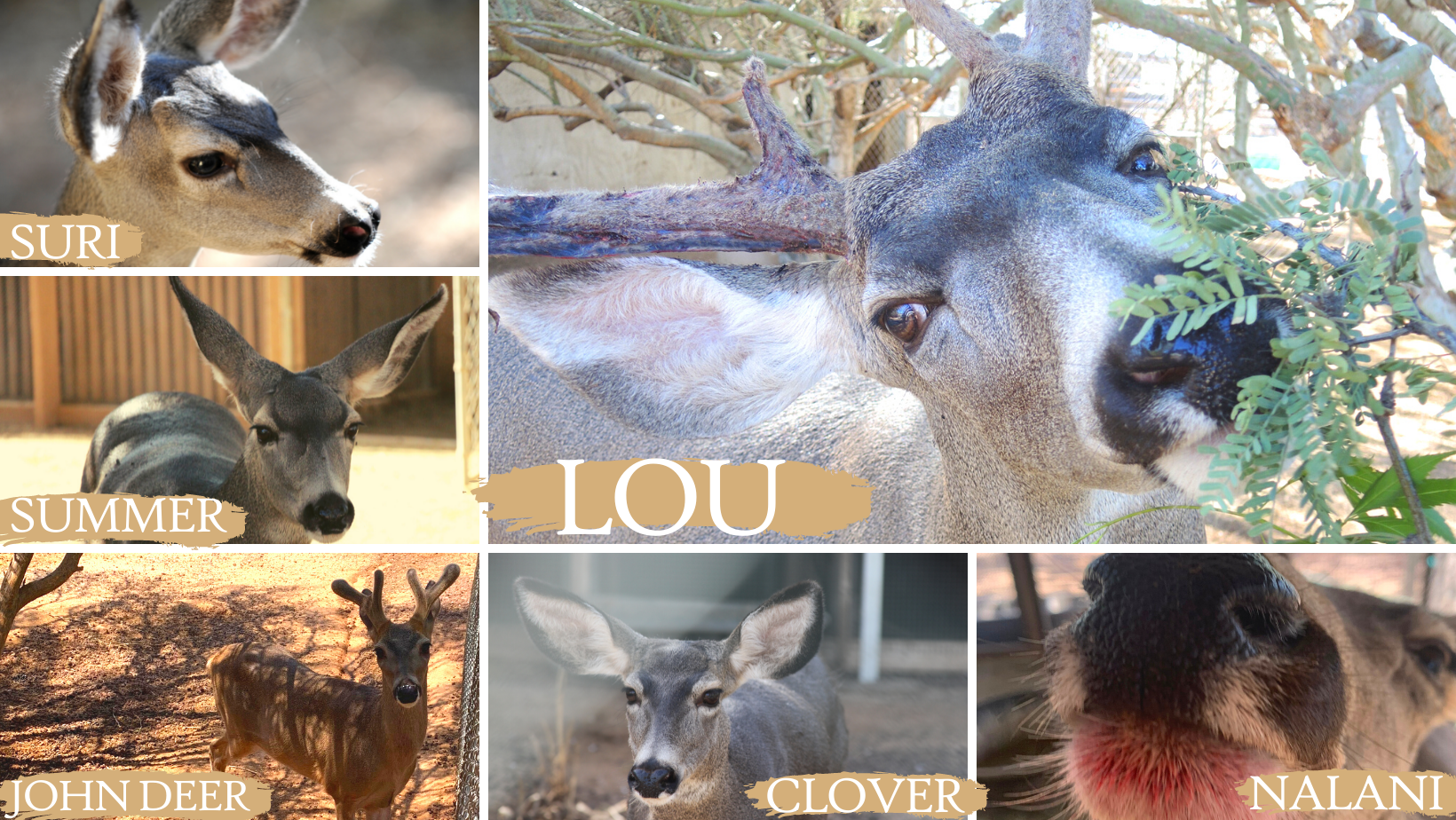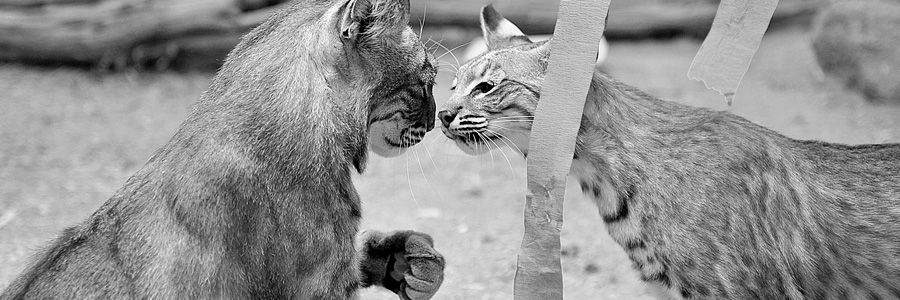DEER

Coues Deer, Odocoileus virginianus
- Habitat: Mountain forests, wooded hills, chaparral, and desert regions
- Status: Least concern
- Population Trend: Stable
- Diet: These "browsers" are herbivores, feeding on a variety of vegetation from fruits and seeds to grasses and leaves
- Weight: 100 - 150 lbs. Females are smaller than males
- Size: 2' - 2.5' tall; 5' - 7' long
- Lifespan: 6 - 9 years in the wild; up to 18 years in human care
- Interesting Facts:
- The annual cycle of antler growth is regulated by the changes in the length of the day. Their antlers will typically shed in the months of January-March and start growing again in the Spring.
- Coues deer are a subspecies of Whitetail Deer.
- "White-tailed" refers to the white underside of the deer's tail, which it displays and wags when it senses danger.
Mule Deer, Odocoileus hemionus
- Habitat: Mountain forests, wooded hills, chaparral, and desert regions
- Status: Least concern
- Population Trend: Stable
- Diet: These "browsers" are herbivores, feeding on a variety of vegetation from fruits and seeds to grasses and leaves.
- Weight: 130 - 280 lbs. Females are smaller than males
- Size: 3' - 3.5' tall; 4.5' - 7' long
- Lifespan: 9 - 11 years in the wild; up to 25 years in human care
- Interesting Facts:
- The annual cycle of antler growth is regulated by the changes in the length of the day. Their antlers will typically shed in the months of January-March and start growing again in the Spring.
- Mule Deer get their name after their ears, which are large like a mule.
- Mule Deer can jump 15 feet in length.
THE SOUTHWEST WILDLIFE DEER



